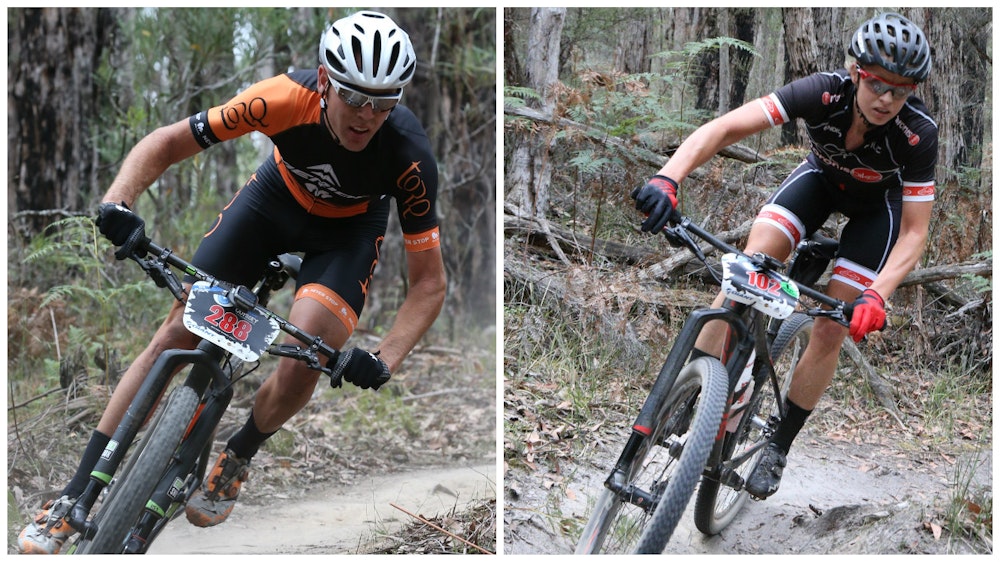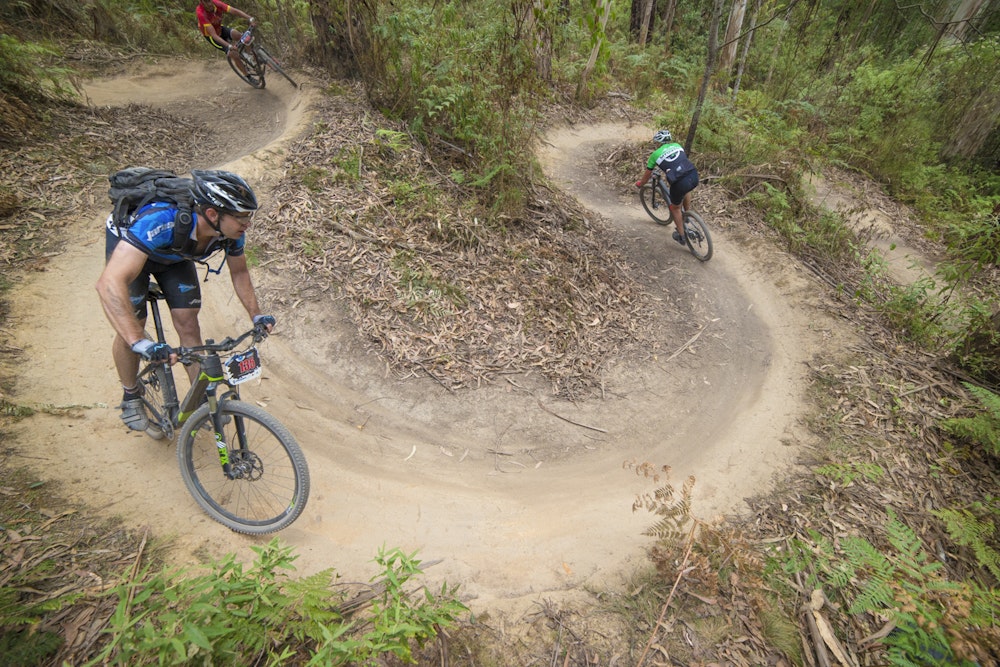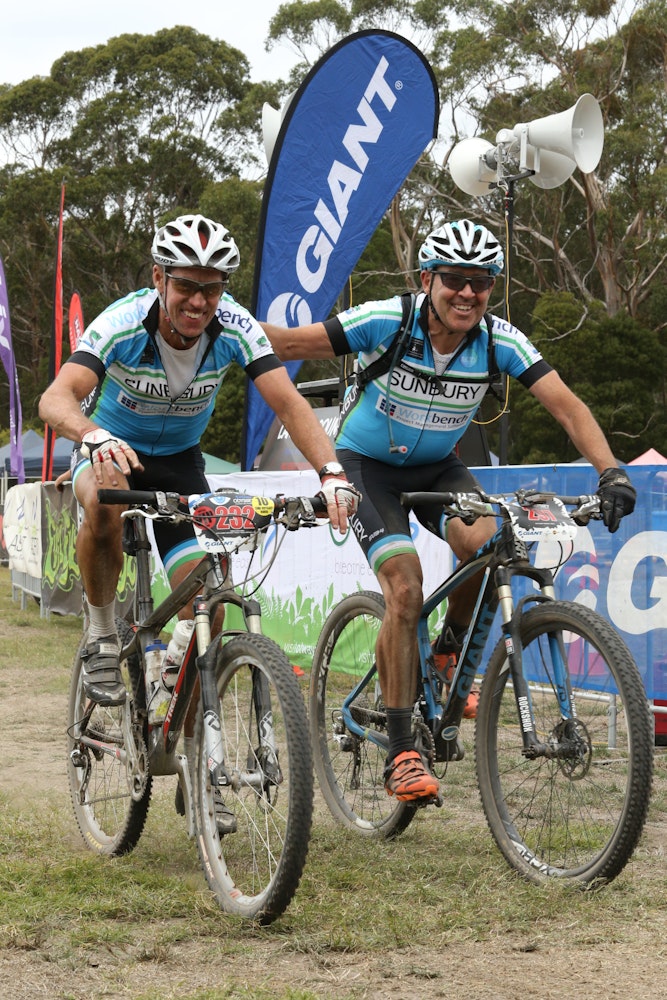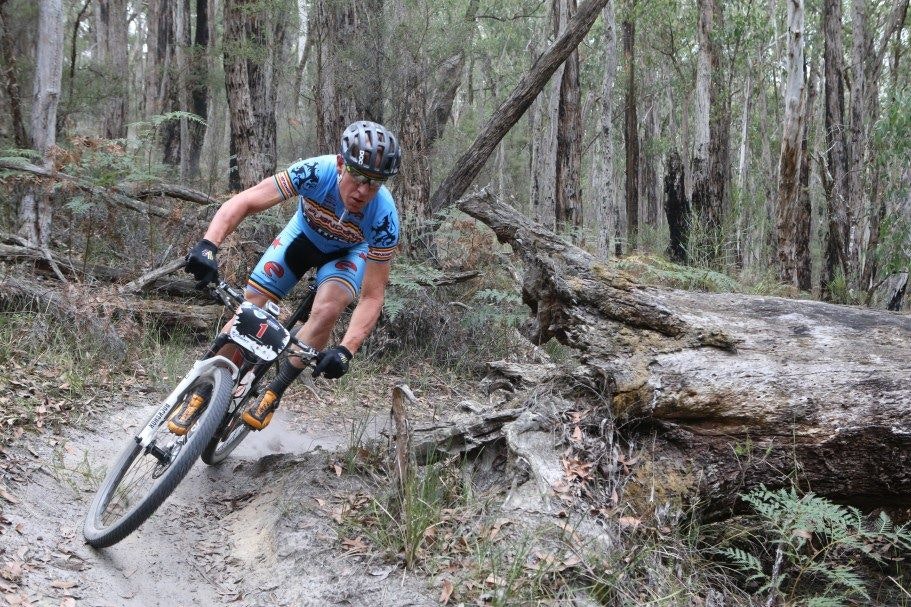Marathon mountain bike events are often considered extended versions of a cross-country mountain bike race. Marathon mountain bike events are typically between 60km and 160km and cover a variety of terrain: mountainous, technical, normally with a mixture of single track, fire road, sealed and unsealed road, even some bitumen. The events can take anywhere from 4 hours to 24 hours to finish. Success at mountain bike marathon events doesn't happen by accident. It takes a lot of preparation: physical, mental, even mechanical - after all, your bike is doing a lot of work, too!
To give an insight into how to race a marathon mountain bike event, we spoke with Otway Odyssey organiser and Rapid Ascent General Manager, Sam Maffett and Bret from the Commonaeros. For those who aren't aware, the Otway Odyssey is considered one of Australia's most respected mountain bike marathon events and recently celebrated its 10th anniversary. The race is complete with seemingly endless single track, 'lung-busting hills,' and 'blitzing descents' - a little bit of something for everyone.
To help you enjoy your marathon mountain bike experience and get a great result, here are some hot tips.

2016 Giant Otway Odyssey winners Peta Mullins and Chris Hamilton - Image from Supersport Images
Mileage
Marathon mountain bike events are a different beast when compared to long distance miles on the road. Winner of the 10th edition of the Otway Odyssey, Chris Hamilton, took 4:18:20 to cover the 100km course. Chris has also had success on the road, winning the 2016 Under 23 National Road Race Championship. In that race, Chris covered 132km in 3:39.23, a huge discrepancy in average speed and overall time. This needs to be considered when planning your training.
This is largely due to the technical nature of MTB events, the extensive amount of climbing involved (the Odyssey climbs over 2,300m in only 100km), and the increased resistance from the 'road' surface and tyres. You also don't get to sit in a group like you would on the road.
If you are going to do the majority of your training miles on the road, these factors need to be taken into account. Avoid clocking up a lot of miles sitting in a group and seek out as many hills as you can. Be aware that an hour on the road is the equivalent of 30min on the MTB, in terms of distance covered.
Bret gave us a very detailed look at his build up to the 2016 Giant Otway Odyssey where he placed in the top 25 overall. Check out the STRAVA profile of Bret's ride
Long-term preparation is the key. The training done two months before the event counts just as much as the training two weeks before the event. Training in the months leading up consisted of 15-17 hours, 300-400km, 4000-6000m of vert and averaging 800TSS per week. This was split between four road rides and two mountain bike rides.
Some of the challenges the Giant Odyssey presents are the big climbs at the 15km and 70km points. Not only do you need to able climb when fresh, but when you have 70km in the legs. To prepare for this, one of the road sessions I would do each week was a 4-5 hour road ride with 20 minutes at 90% each hour. This really helps with climbing late in the race. Another hugely beneficial training ride I did weekly was a 4-5 hour ride on the mountain bike with a few 45-60 minute race pace efforts on single track. This keeps the skills sharp, builds power, teaches you to ride single track efficiently and gets you used to riding single track when fatigued.

Elevation profile of the Otway Odyssey
Develop your skills
You may have an enormous engine, but if you are losing time on the technical parts of the course, all your energy will be wasted trying to make up for lost time. Get out on the trails as often as you can and practise cornering, descending and technical elements you are likely to come across during the event. Sam suggests trying to do some training on the course itself, or at least on similar terrain to that which is included in the race.
Almost every marathon mountain bike race will have technical sections and place a large focus on bike handling and cornering. Being able to corner and handle your bike well is crucial. Try to hold as much speed as you can through the corners without excessive braking. The more speed you wash off going into a corner, the more effort you have to put in coming out of the corner to get back up to speed. Sometimes this is unavoidable - 180-degree turns, loose track surface, a rider in front of you - but, where possible, limit braking and conserve your energy for another part of the race.
To do this, keep your vision well ahead of you. The bike will go where you are looking, so if your eyes are fixated on the ground or at that huge tree coming towards you, that's where you will end up.
Here are two examples of downhill sections of the Giant Otway Odyssey from Bret's GoPro. Notice the rapid changes of direction and relatively small margin for error. Also, notice the incredible speed Bret is able to carry through the technical corners. Bret is able to catch and pass another rider through good bike handling skills, as opposed to superior fitness. There are a few occasions where Bret is forced to apply a lot of brake, and almost come to a stop, but for the most part the descent is flowing, allowing him to get some recovery while maintaining a good speed.
Do your research
Make sure you know what is coming on the day. If the race has a lot of single track, then it makes sense to hit up as much single track as you can. If the course is largely fire road and double track, then seek out fire road and double track. If the ascents are really steep, then practise putting out big power for short periods of time.
Whatever the course may throw at you, make sure your skills and ability can handle it.
Not only do you need to able climb when fresh, but also when you have 70km in the legs.
As mentioned above, the Giant Otway Odyssey has two big climbs at 15km and 70km. Bret would start each of these climbs with his heart rate at about 180bpm (roughly 90% of his max heart rate), and build to 191bpm at the top (almost max heart rate). As a result, Bret would spend a significant amount of time above threshold during his training rides to simulate the extreme effort required at these key points in the race.

Image from Matt Hull Photography
Get Your Nutrition Right
Chris Hamilton might have finished the 100km Otway Odyssey in 4hrs 18mins, but down the other end of the field, a lot of riders were finishing well over 8hrs. That's a lot of time on the go and a huge amount of calories required to finish.
There's no doubt, regardless of where you finished on the leaderboard, you will need to take on a significant amount of nutrition. This may be in the form of gels, liquid calories, energy bars, fruit, or something more substantial. Think about the amount of food you would eat during a normal workday and then probably double it.
As a result, you need to have a nutritional strategy in place to keep your energy levels up and spirits high. Getting your nutrition right will not only give you energy to finish the event, it will also help your concentration and mood, two essential elements of marathon mountain bike events.
Rhiannon Snipe, an Accredited Sports Dietitian, says training our stomachs is just as important as training our legs.
"It’s common for cyclists to have a detailed training plan outlining the number of target kilometres per week, hill repeats per session or hours in the saddle, but have you ever considered training gastrointestinal (GI) system?"
Knowing what your stomach can tolerate and working within those constraints will avoid any bloating, belching, nausea, stomach cramps, and diarrhoea associated with excessive carbohydrate intake.
As well as ensuring you get sufficient calories, cramping is another pitfall of long distance events that requires careful consideration. Sweat rate and sodium concentration can vary dramatically from person to person. Failure to replace lost sodium and electrolytes could spell an early end to your day. We did a Sweat Test with Darryl Griffiths, CEO and Founder of Shotz Nutrition and found a 300% difference in results after an hour of steady state riding. Knowing how much you sweat and the sodium concentration of your sweat will help you customise your race day nutrition and improve your chances of a good result.

Happy finishers - Image from Supersport Images
Give your bike some TLC
It goes without saying that you need to have your bike in perfect condition before an event like the 100km Otway Odyssey. You'll encounter single track, fire road and double track; steep descents, loads of climbing, technical sections, fast corners, rough roads, and obstacles you'll have to jump; and more than likely, another few hundred other riders to contend with. Your bike needs to be running flawlessly to make all of that manageable.
Make sure your drivetrain is shifting perfectly, your tyres are fresh without cuts and excessive wear, and there is nothing loose that will come off through the rougher sections of track or after jumps.
Some wise words from Sam: Make sure your bike is comfortable to sit on for a long time. You can get a customised bike fit done at a lot of bike shops these days, but even without doing that, make sure your seat is the right height (your knee should be slightly bent when your foot it at the lowest point), that your seat is comfortable, and you don’t have to reach forward too far to reach the handlebars.

Lots of obstacles in marathon mountain biking - Image from Supersport Images
Click here to find out more about the Giant Otway Odyssey
Cover image from Matt Hull Photography





